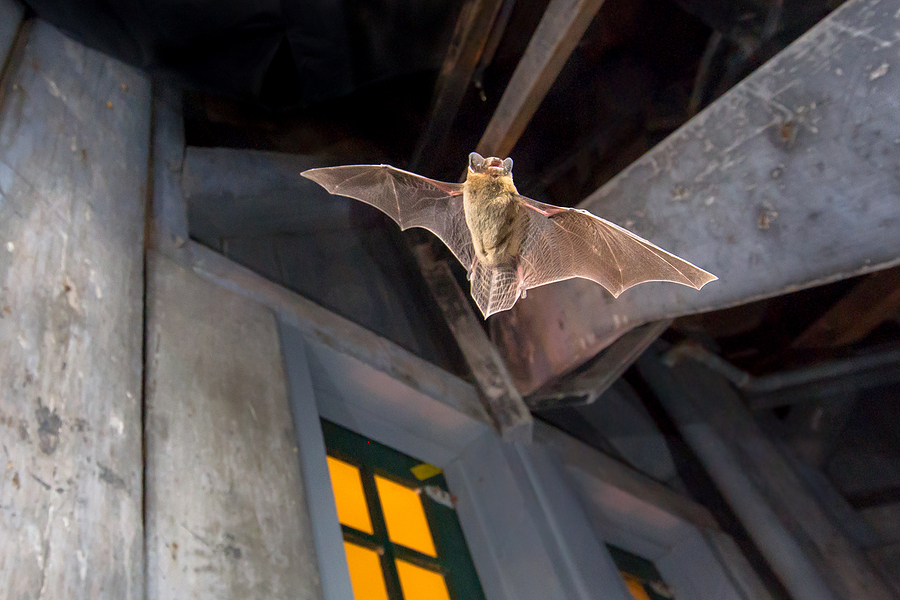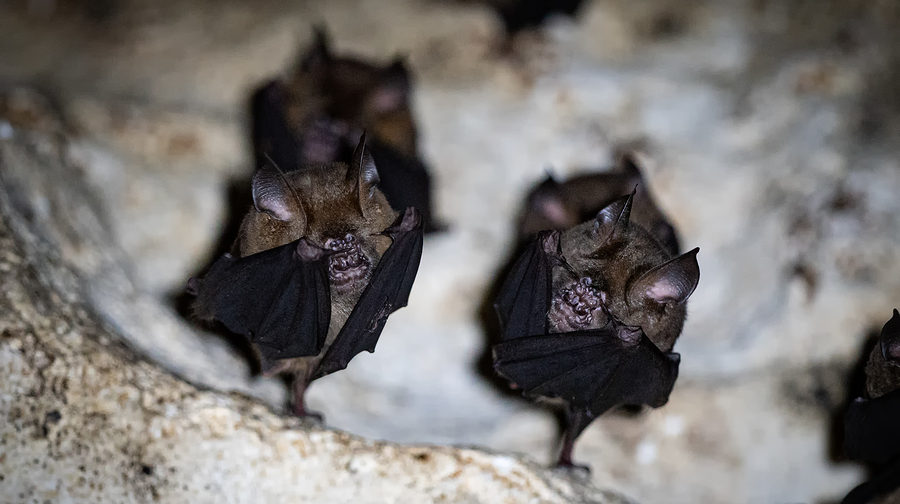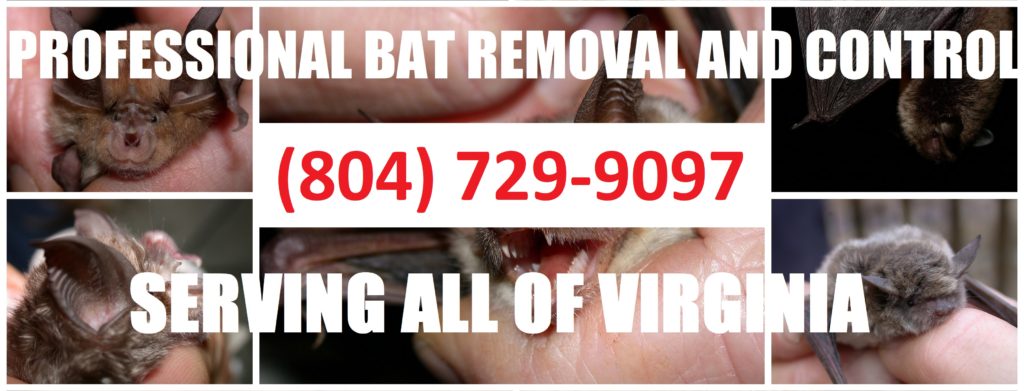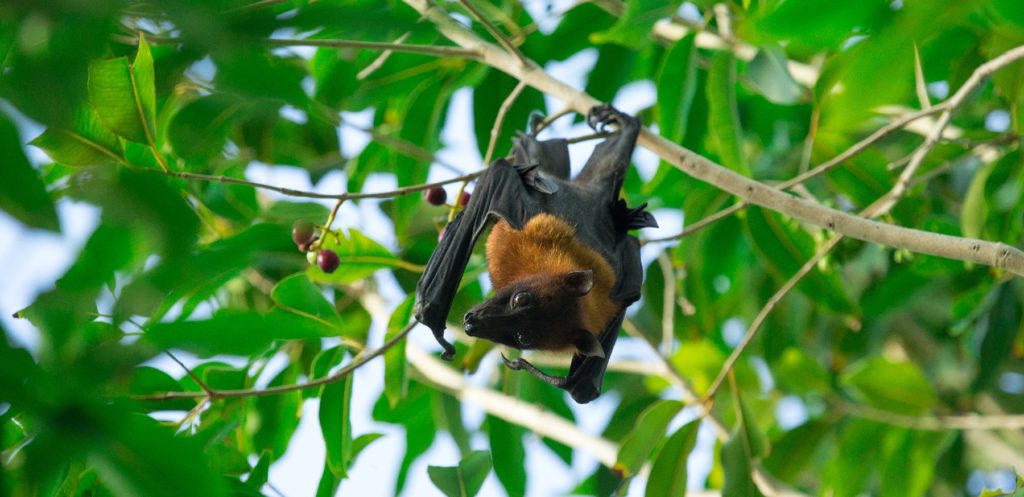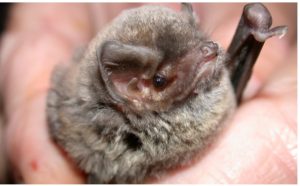In a previous blog, we discussed that all bat species are classified as one of two suborders, either Megachiroptera or Microchiroptera. In Virginia, we do not see megabats since they are biologically acclimated to tropical and subtropical climates. When local property owners are dealing with nuisance bat problems around here, it is always a Microchiroptera species to blame.
Continue reading to learn more about Megachiroptera suborder, and the common species native to the surrounding Virginia areas.
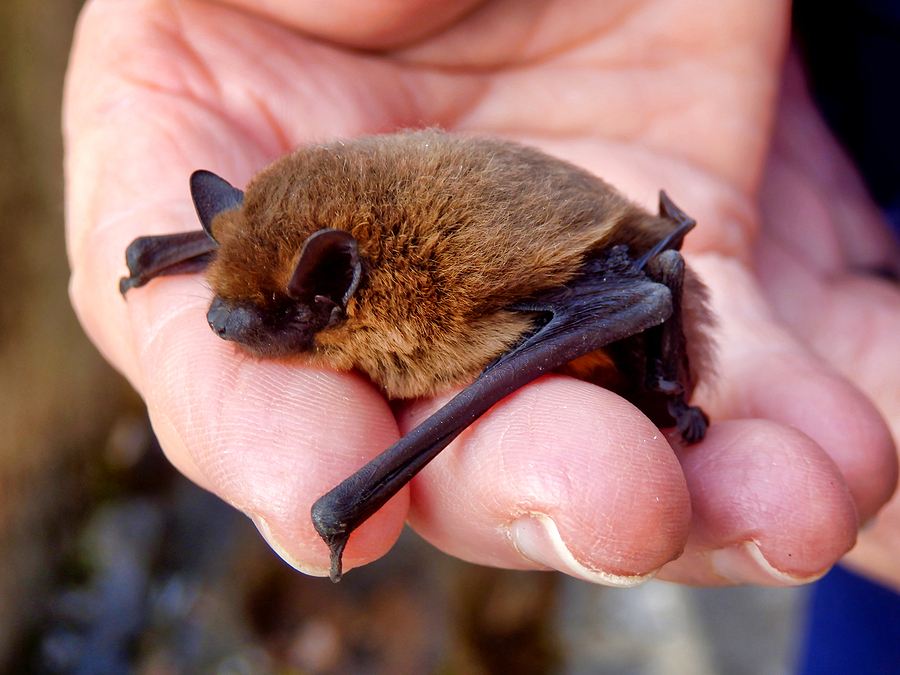
Yangochiroptera is the New Microchiroptera
Until recently, Microchiroptera was the suborder that included all microbat species. However, after new molecular evidence proved that size is not the most indicative factor in differentiating between megabats and microbats, “Microchiroptera” suborder is considered outdated. Most previously classified “microbats” are now classified as Yangochiroptera, with the exception of a few species. Furthermore, this evidence has also merged a few microbat species into the Yinpterochiroptera suborder, along with fruit bats, flying foxes, and other megabat species.
Special Note: For the sake of avoiding confusion, we will stick with the conversational terms, “microbats” or “Microchiroptera” in this blog.
Echolocation
One of the most significant differences between megabats and microbats is the use of echolocation. Megabats do not use echolocation, while virtually all microbats do. Echolocation, also known as “bio sonar”, is essentially a built-in sonar system that allows bats to navigate their surroundings more precisely, which aids in detecting, darting, and diving for insects.
Echolocation works by emitting ultrasonic sounds that bounce off objects and return as echoes. Bats then compare the outgoing ultrasonic pulses with the incoming echoes to create a detailed image in their brain of their exact surroundings.
Many people wrongly assume that bats are blind and have to use echolocation in order to see, when the truth is, bats see quite well, and simply rely on bio sonar for enhanced hunting and navigating. Sunglasses are a good example. We don’t need them to see when it’s sunny out, but when we wear them, we can see a lot better.
Diet and Habitat
Microbats are insectivores, which is actually good news for us. They are terrific pest control for summer mosquitos, flies, gnats, and more. Some species are even known to consume small fish, amphibians, birds, and even the blood of livestock. Although microbats are vital to our surrounding ecosystem and environment, they can sometimes find their way into our homes and businesses and create quite the mess. When microbats are not roosting (a species-specific posture of hanging upside down by their feet) in attics, crawl spaces, garages, walls, roofs, and more, they generally take shelter in hollowed trees, caves, log piles, and abandoned mines.
Behavior and Reproduction
Most bats are colonial, meaning they live in large colonies. They are not generally solitary mammals, although some species do live alone or with just a few other bats. It is common for colonies to have hundreds, or even thousands, of bats. Studies have shown that they are capable of forming and maintaining long-term relationships, and that many species use food sharing and mutual grooming to strengthen social bonds.
Late summer and early fall are the typical mating seasons for most species. After females finish mating, they store the male’s sperm until the following spring when they emerge from their hibernacula to find a new summer home where they will establish a nesting area to give birth to their young. These are referred to as “maternity” or “nursing” colonies. Bat babies, called “pups”, are usually born in May or June. Gestation periods last between 40 days and 60 days, and females usually give birth to just one or two pups that remain with them until the fall when the cycle of mating and hibernation repeats itself.
Common Virginia Bat Species:
◈ Virginia Big-Eared Bat (Corynorhinus townsendii virginianus)
◈ Indiana Bat (Myotis solidalis)
◈ Gray Bat (Myotis grisescens
◈ Rafinesque’s Big-Eared Bat (Also known as the Southeastern Big-eared Bat)
◈ Big Brown Bat (Eptesicus fuscus)
◈ Little Brown Bat (Myotis lucifugus)
◈ Silvered Haired Bat (Lasionycteris noctivagans)
◈ Hoary Bat (Lasiurus cinereus)
◈ Evening Bat (Nycticeius humeralis)
◈ Eastern Red Bat (Lasiurus borealis)
◈ Northern Long-Eared Bat (Myotis septentrionalis)
Additional Species of Bat in Virginia
Additional species of microbat in Virginia include the Eastern Small-footed Bat, Eastern Pipistrelle Bat, Seminole Bat, American Long-Eared Bat, Lump-Nosed Bat, Ozark Big-Eared Bat, Townsend’s Big-Eared Bat, and the Northern Myotis.
Are you dealing with nuisance bats on your property? Contact Virginia Bat Pros at 804-729-9097 for prompt and professional bat removal and control you can afford. We serve residential and commercial clients.
Related Blogs:
What You Need to Know About the Department of Health and Bats
The Difference Between a Wild Bat and a Nuisance Bat
Common Misunderstandings About Bats

